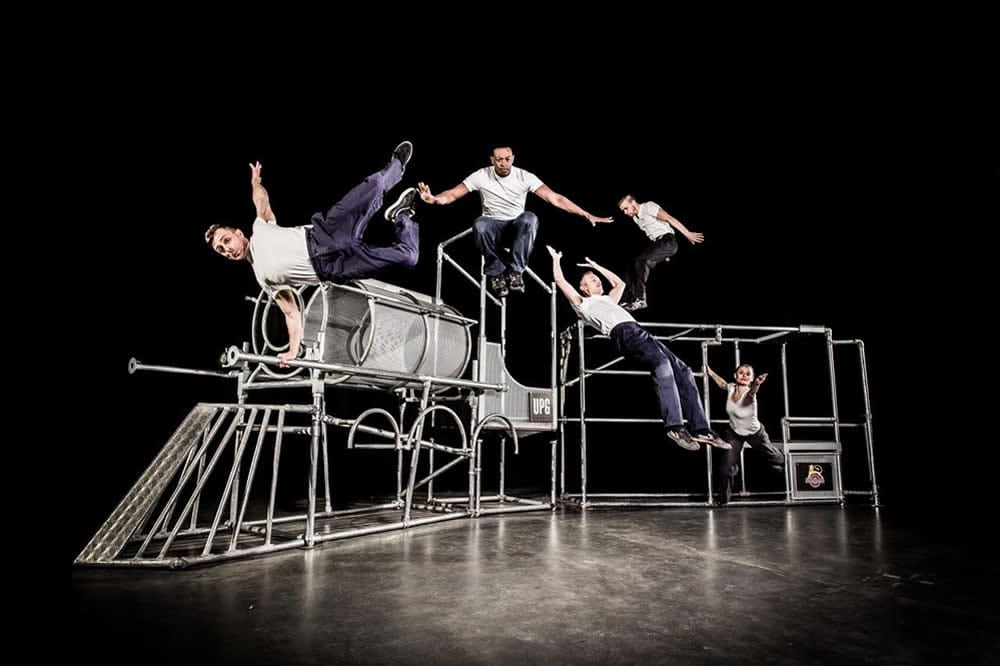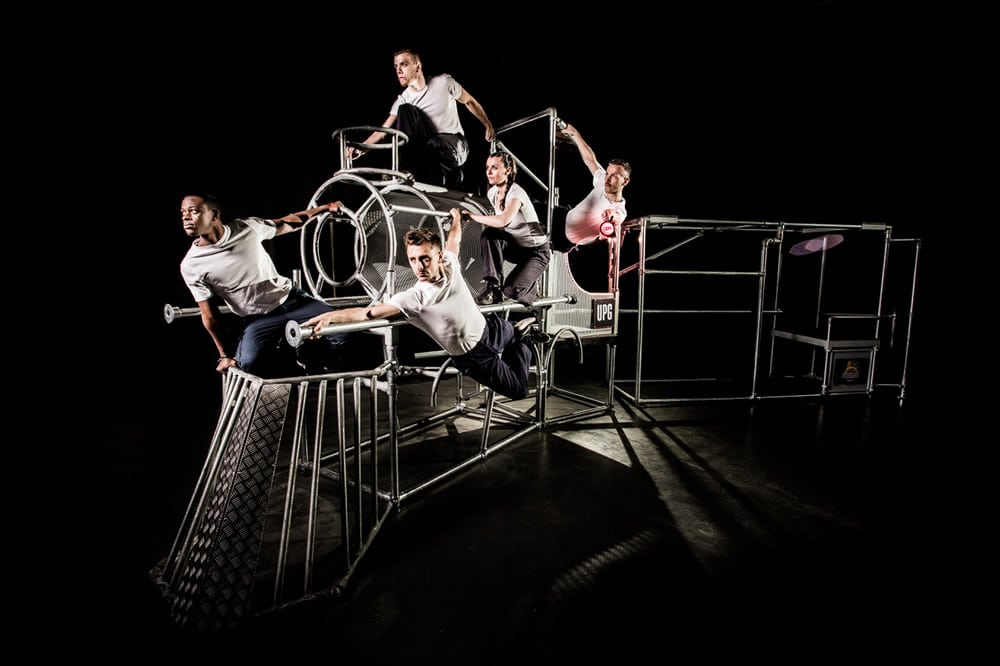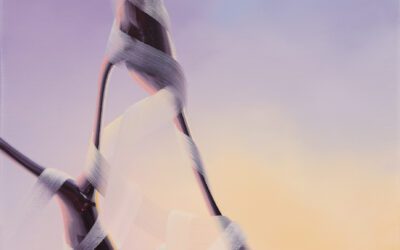[dropcap style=”fontsize:100px;color:#992211;”]P[/dropcap]erformance parkour has an obvious logic in a street theatre context. A high-impact mode of physical expression born from the urge to re-impose human agency onto urban landscapes which have for decades been designed primarily in the interests of enhancing business, budgets and the all-devouring internal combustion engine.
Urban artistry, be it parkour, street skating, posters, graffiti or guerrilla gardening, partly stems from the urge to reclaim our cities for the people who live in them. In this interview, Trebuchet examines the phenomenon of street theatre (or pop-up performance, urban spectacle, however you choose to define it; the definitions are varied and contentious) in conversation with Alister O’Loughlin, co-founder of Prodigal Theatre and performer with the Urban Playground Team.
What’s the big idea behind your company? What do you aim to do?
The Urban Playground Team is the world’s first performance-parkour company. We bring together world-class theatre and dance artists with one of parkour’s co-creators and other traceurs. Our work blends the core movement vocabulary and values of parkour with dance, theatre, slapstick comedy and anything else that takes our fancy, in order to tell stories through movement both on the street and in theatres. Most presentations of parkour are displays, and they say: ‘Look what we can do! We’re extraordinary!’ The work of the UPG Team is saying: ‘Look what you can do! This is for everybody!’ so we accompany most of our performances with workshops where we invite the audiences to have a go. We also create participant performances where locally-based young people train with us ahead of a show and then make an appearance in it.
Do humans have a primal social need for theatre?
Here’s a brief theory: when the hunters return to their primitive tribe, they act out the hunt as a way of teaching the whole tribe how to do it: where the food is found, which berries to pick and which to avoid, how to bag a woolly mammoth. It’s a serious business. Acting out the time Dave nearly got mauled to death is important; it’s a warning! Until Dave gets married—and then the hunters get together and for the wedding feast they act it out again, but this time as a comedy. And then Dave does get killed, and that hunt is retold as an epic tragedy… In short, yes. All art comes down to telling stories, and that’s been with us for a long time.

Is creating a suspension of disbelief more difficult without a fourth—or any—wall?
We don’t suspend disbelief. We work with reality. You cannot act a jump from one rail to another at a height of two or three metres; either you make it or you don’t. This is what first attracted us to parkour; it’s a training in the real. Why you make that jump—well, that’s something we can build a story around. As for the fourth wall, we’ve never used it.
Our sister company Prodigal Theatre (from which the UPG Team grew) makes physical retellings of classic texts. And we work in the round, or site-specific, or promenade. In all cases we acknowledge the audience, talk to them, include them, implicate them in the action. Fourth wall on the street? Not our style at all.
At its purest, street theatre needs only an empty space and an actor. That said, what equipment (lighting, sound, props, etc.) has the most impact on the performance?
Our performances are based on steel scaffold sets: the skeletal frame of an office complex, or a train, or the forms of a city block. Or we work on existing architecture—this has included rooftops, street furniture, being inside moving public transport with an audience. Our work is all about that relationship with the environment, so we either have to bring the environment with us, e.g., our train, or we have to be resident in advance to create site-specific choreography. Alongside that, the work of our musician in creating soundtracks with our director is essential.

What constraints are there on your live work?
Well, despite what I said earlier, there is a level of risk. Our work is incredibly physically demanding, though we try not to demonstrate that too much—it should always look easy. When you add in heat (we’ve performed in over 40°C in Australia and in Botswana), heatstroke can make things very interesting.
In Naples a few years ago we almost had heart attacks playing in a theatre with no air conditioning during a long heatwave—we developed tunnel vision and unbelievable shivers that made everything very tricky. There’s also never enough time, never a rehearsal space that substitutes a street in terms of scale but has all the comforts you need for endless hours of rehearsing. Funding is tight and the team have to come together from the south coast of England, Wales and Paris, so just getting together can be a logistical headache… that’s theatre!
An unedited version of this interview was published in Trebuchet 3: Art and Resistance, available here

Naila Scargill is the publisher and editor of horror journal Exquisite Terror. Holding a broad editorial background, she has worked with an eclectic variety of content, ranging from film and the counterculture, to political news and finance.





















